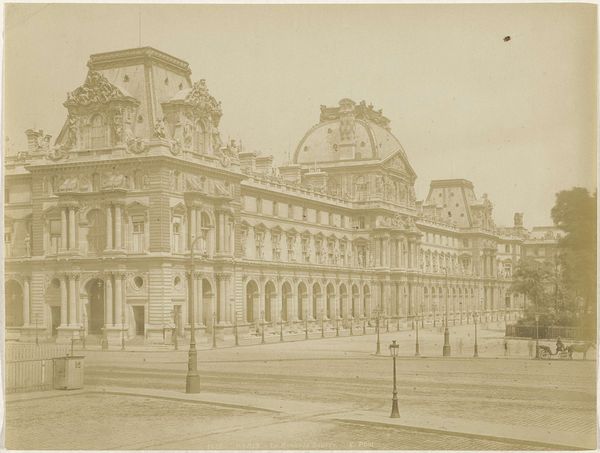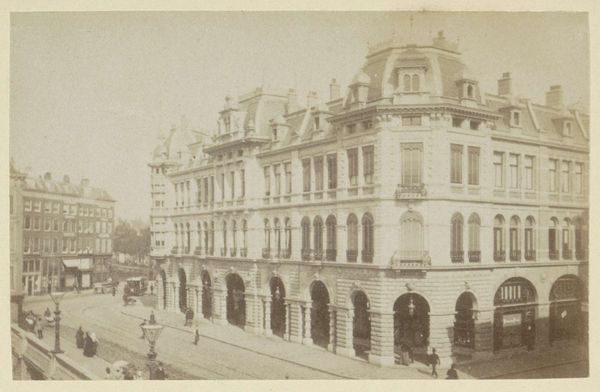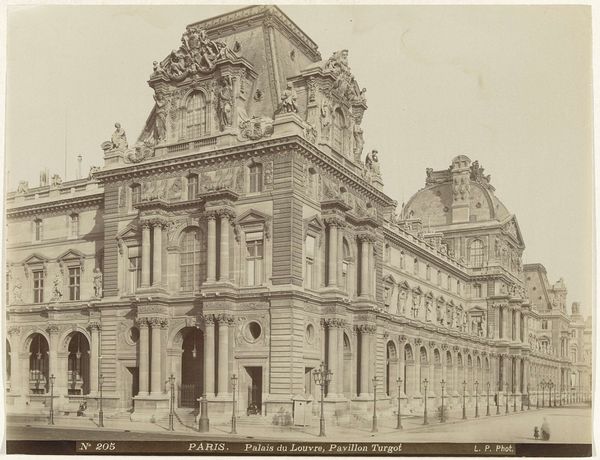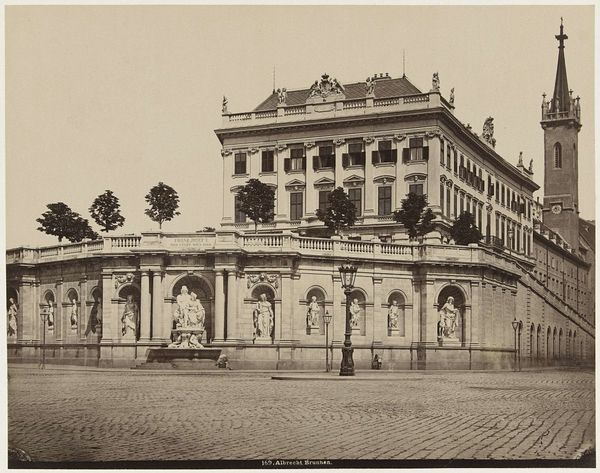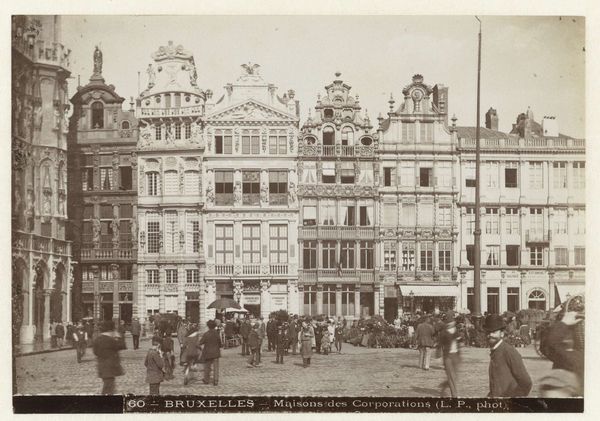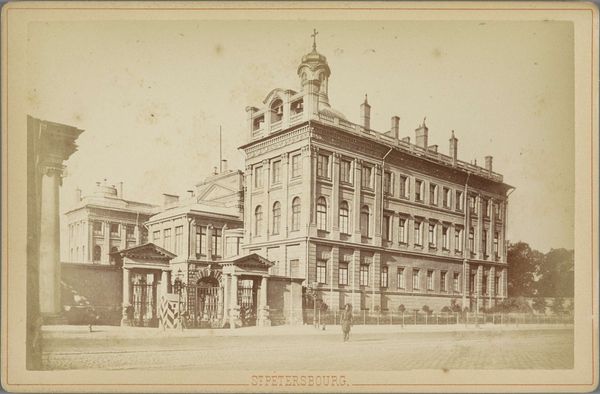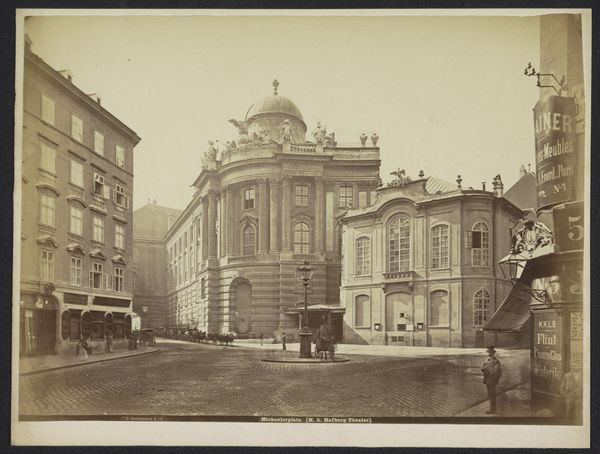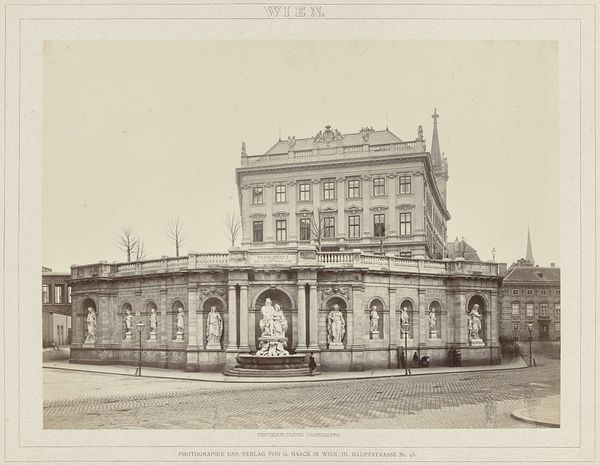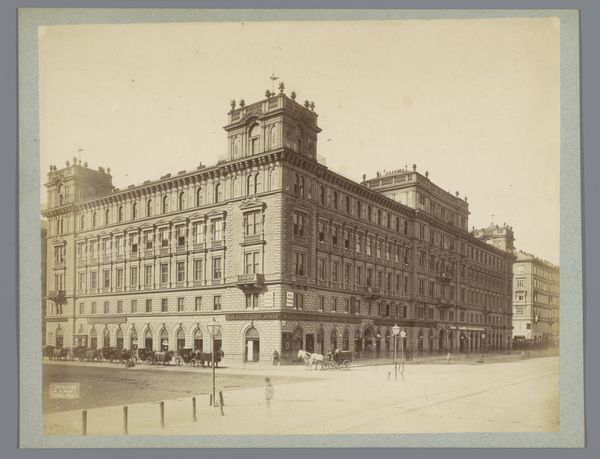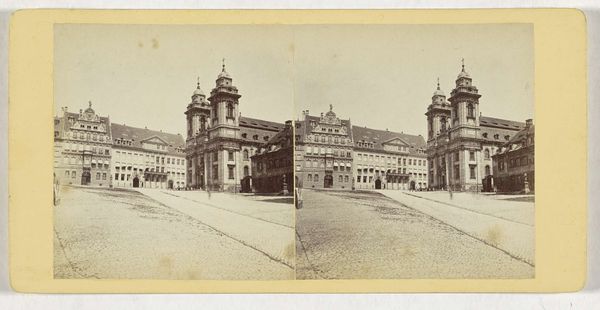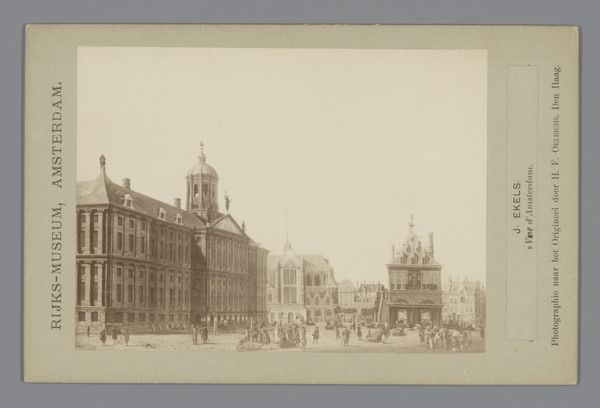
plein-air, daguerreotype, photography, architecture
#
plein-air
#
daguerreotype
#
historic architecture
#
photography
#
historical photography
#
19th century
#
cityscape
#
architecture
Dimensions: Image: 33 x 42.7 cm (13 x 16 13/16 in.) Mount: 46 x 60.5 cm (18 1/8 x 23 13/16 in.) Mat: 55.9 x 71.1 cm (22 x 28 in.)
Copyright: Public Domain
Curator: This is Edouard Baldus's "Lyon, Hôtel de Ville," taken between 1860 and 1862. A photographic rendering of power and civic presence. Editor: It certainly feels imposing, even in this subdued sepia tone. All that carved stone—the detail is incredible! I immediately think about the labor involved. Curator: Precisely! Look at the façade; the sculptural program featuring classical figures evokes justice and wisdom, ideals associated with governance. It is built to impress! And look above: the clock tower dominating the composition—it marks the rhythm of civic life. Editor: It speaks of empire, I see the amount of craft and industry concentrated in one single edifice. How were images like these commissioned? Curator: These photographs played a crucial role in documenting urban development and modernization during the Second Empire, serving as propaganda tools to showcase progress and imperial ambition. It became the symbol of an ideal city in an ideal country. Editor: It’s fascinating to consider the shift from traditional prints and paintings to photography and the impact it must have had on documenting urban environments at the time. A daguerreotype exposed en plein-air – to capture so many intricate architectural details – how much did that method demand in terms of process, of production, from Baldus? Curator: And notice the empty plaza; Baldus seems intent on immortalizing the architecture itself, the physical representation of power and societal order, which reinforces an imagined cultural and imperial center. He wants it to stand for eternity! Editor: Well, he clearly took a risk in exposing the limits of photography itself: no people in the shot give it an eerily staged feel, and underscore how photography flattens reality. I’m now wondering about Baldus' relationship to the materials, to the workers… how does his subjectivity interact with them? Curator: A complex perspective, and necessary questions to pose when encountering images with symbolic weight, in which materiality can evoke deeper contextual awareness of our inherited ideas and collective experience. Editor: I see his work anew – no longer just a still of Lyon’s city hall – but now as a set of social relationships, of tensions and resolutions embedded within layers of material processes and making.
Comments
No comments
Be the first to comment and join the conversation on the ultimate creative platform.

